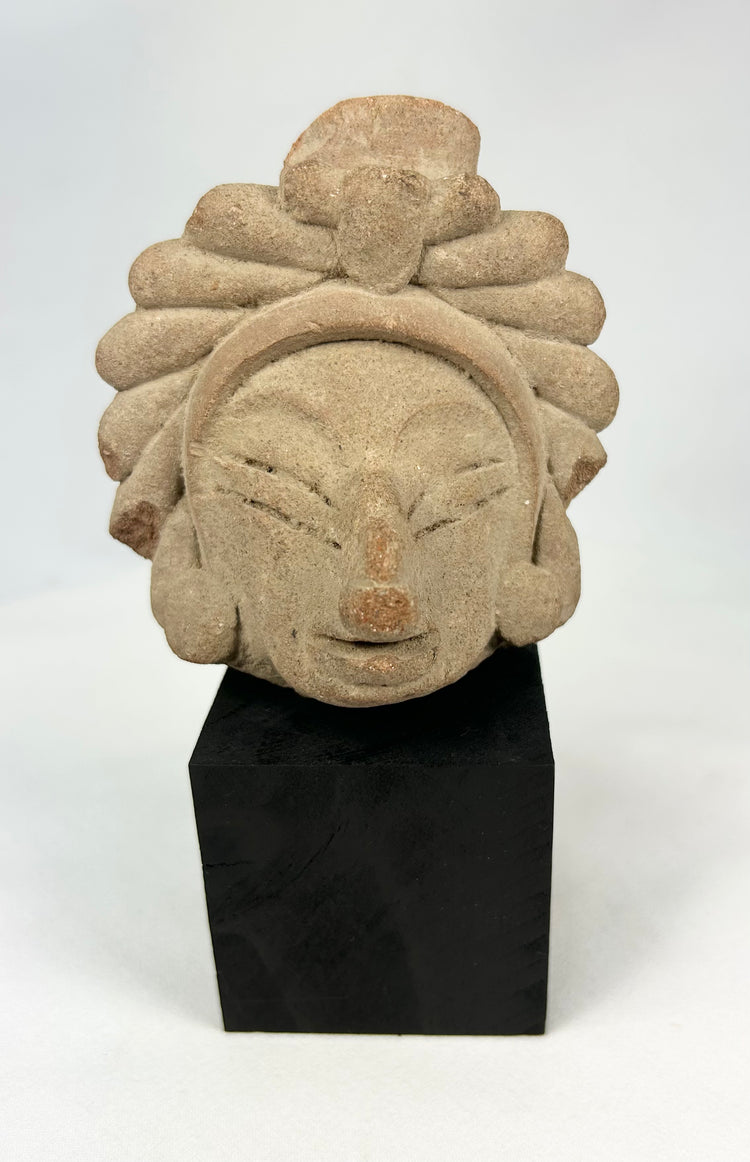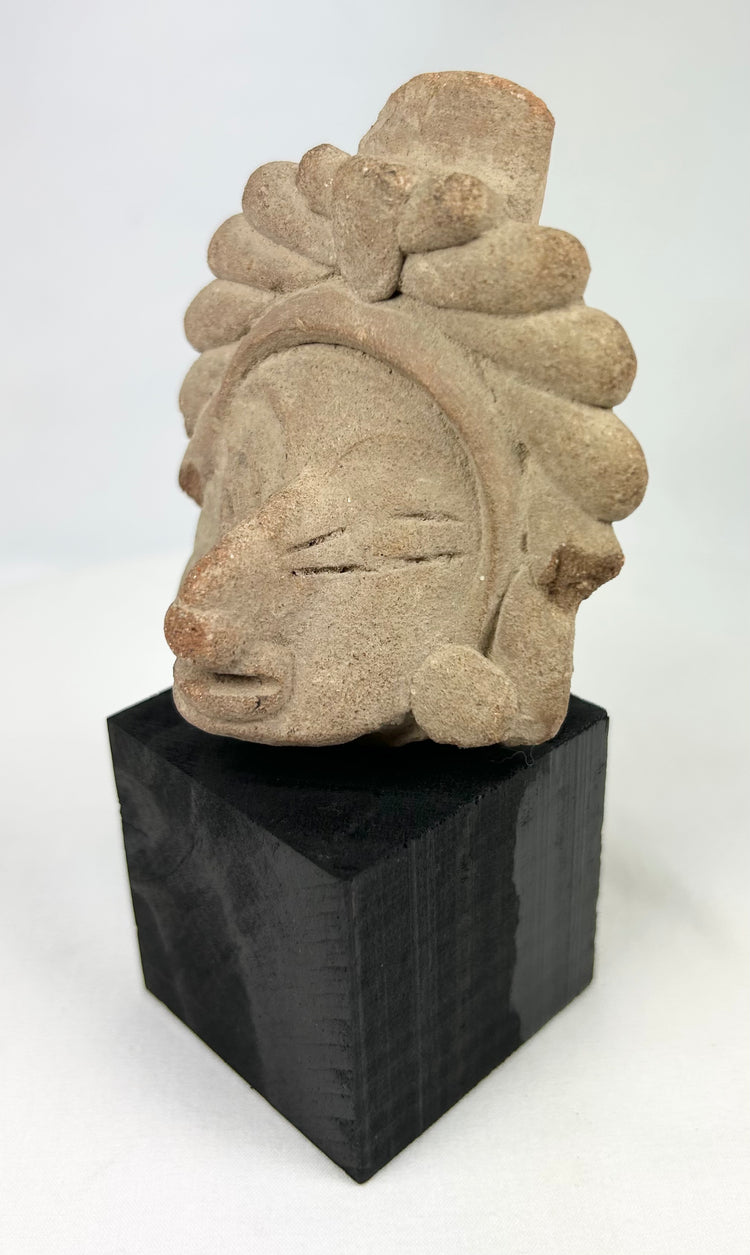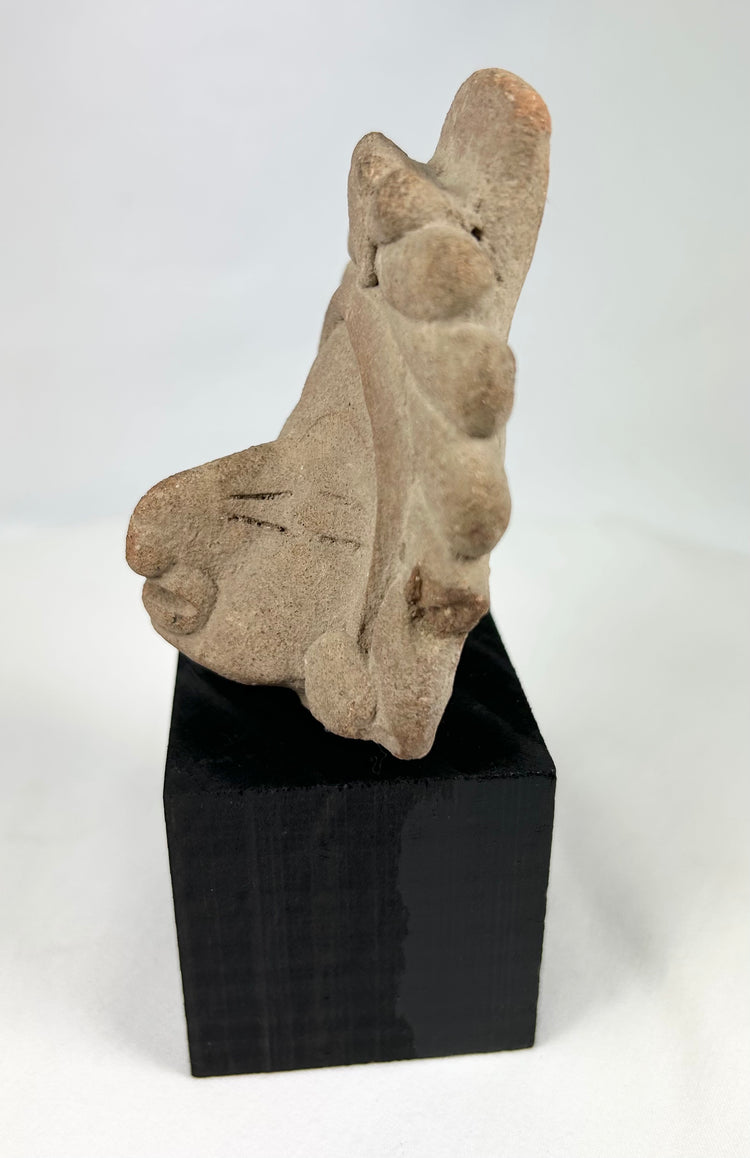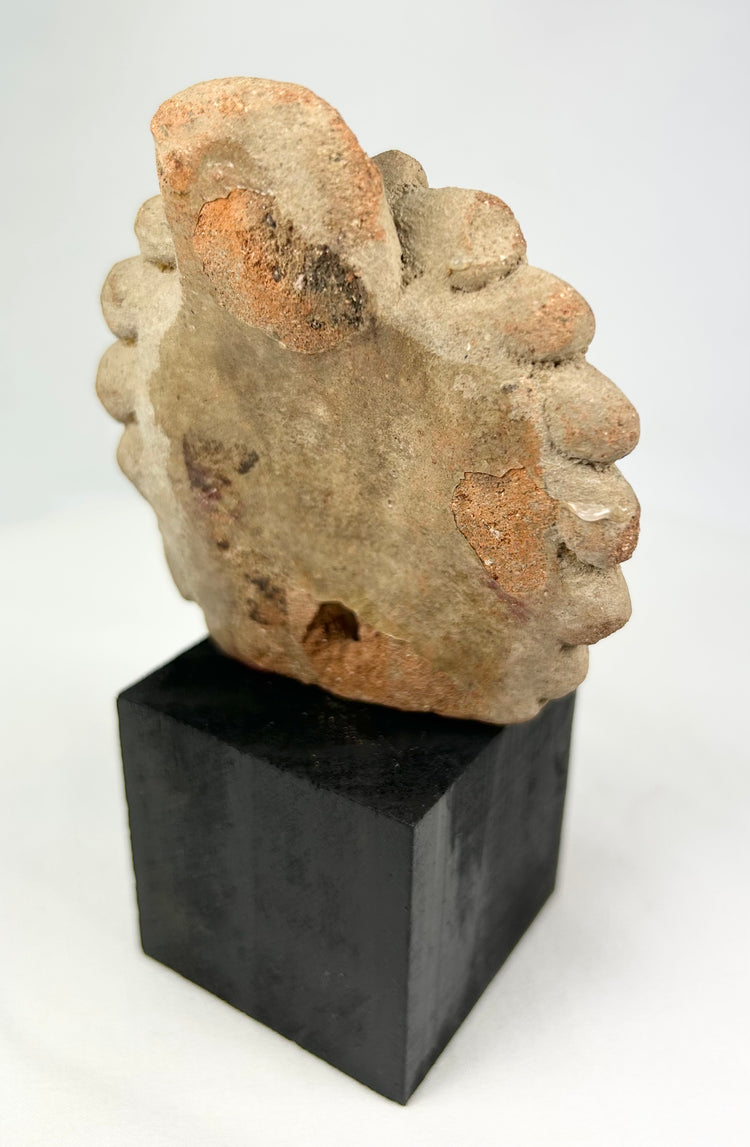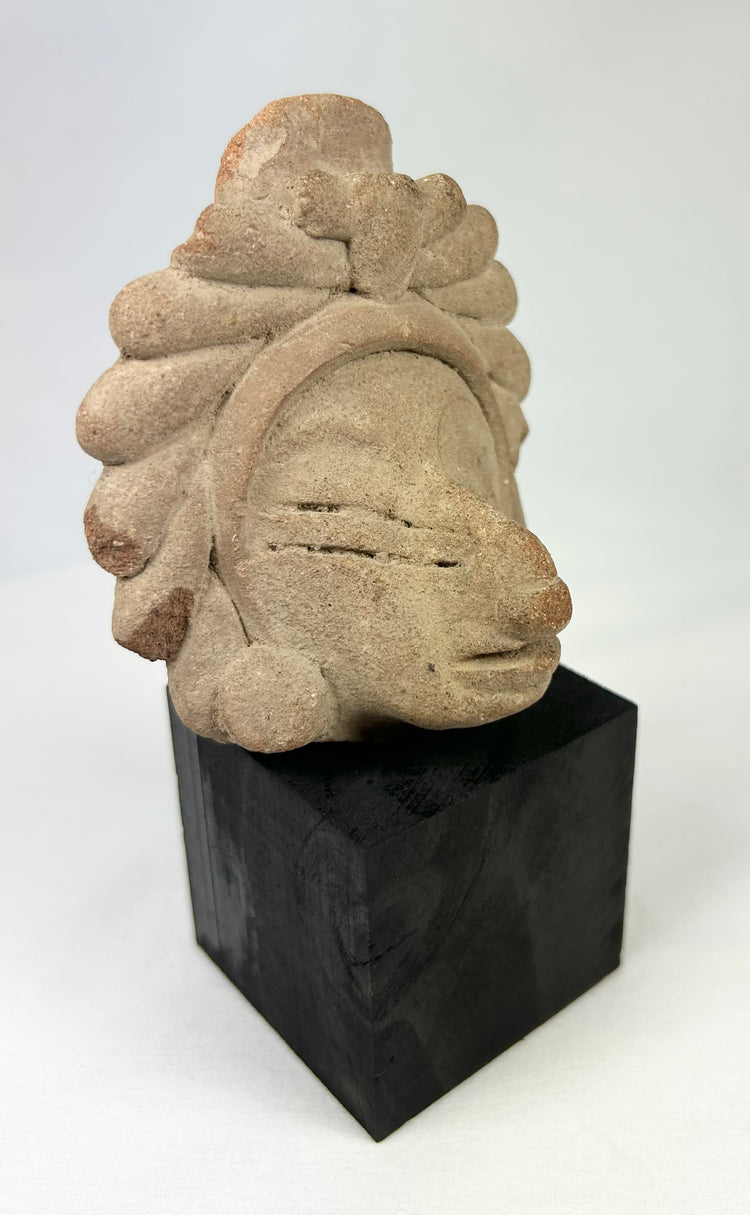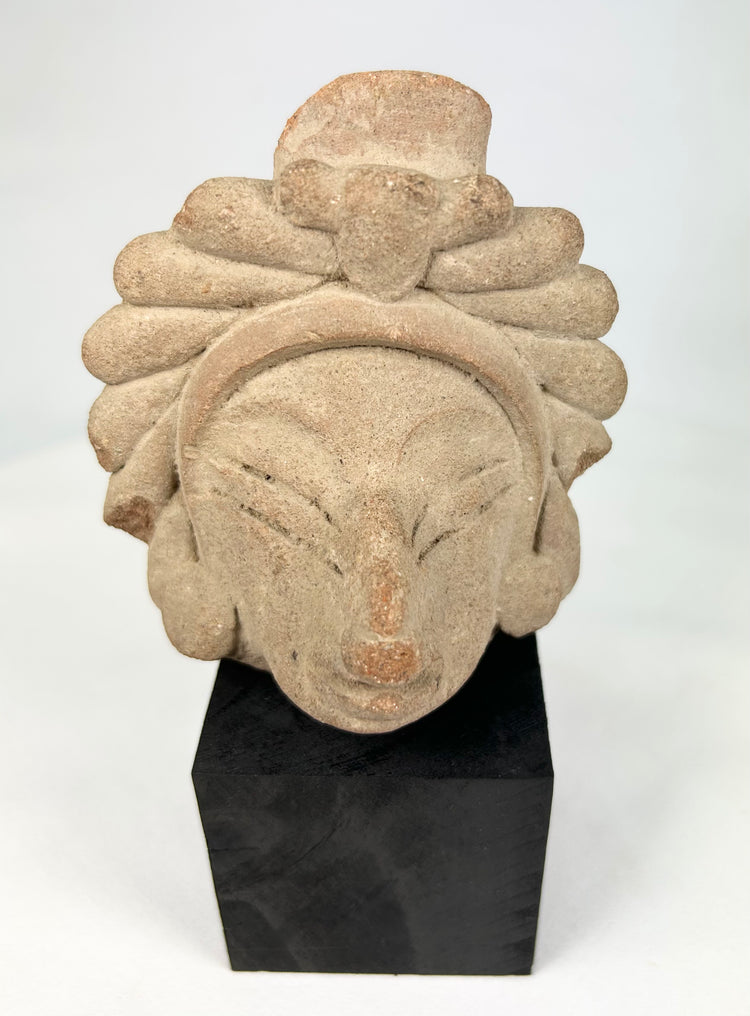Explore our curated collection of Indonesian artifacts, showcasing the rich cultural, spiritual, and artistic traditions of the archipelago.
Majapahit Stone Guardian Head | Indonesia | Temple Fragment | Circa 14th–15th Century
Description
More
Less
More
Less
Historical Context & Origin
Region: Indonesia (Java), Majapahit cultural sphere
Material: Volcanic stone (andesite)
Period: Likely 14th–15th Century CE
Description
This stone temple guardian head depicts a fierce protective visage—Kala or Simha—carved in high relief and framed by a radiating wreath of flame- or lotus-like petals. The broad snout, stylized eyes, and encircling mane reflect its role as an apotropaic guardian, traditionally positioned above temple portals or shrine walls in Javanese Hindu-Buddhist architecture. The weathered surface retains mineral accretions, and the piece is mounted on a modern display stand for presentation.
Features
- Guardian head (Kala/Simha) with radiating flame/lotus-like mane
- Carved from andesite temple stone; architectural fragment
- Surface shows strong weathering and ancient character
- Mounted on a modern stand for secure display
Cultural Significance
Kala/Simha heads served as protective figures at temple thresholds throughout the Majapahit period, symbolizing divine guardianship and ensuring the sanctity of sacred spaces. Such apotropaic imagery is a hallmark of Javanese Hindu-Buddhist temple architecture.
Condition
Stable, with erosion and mineral accretions consistent with long-term exposure and use.
Dimensions (approximate)
Height: 5.25 in
Width: 2 in
Depth: 2 in
Age
Majapahit Era, 14th–15th Century CE
Learn More
Discover a comparable museum example of Majapahit terra-cotta heads artistry: Fifteen terra-cotta figures - National Museum of Asian Art
Description
Historical Context & Origin
Region: Indonesia (Java), Majapahit cultural sphere
Material: Volcanic stone (andesite)
Period: Likely 14th–15th Century CE
Description
This stone temple guardian head depicts a fierce protective visage—Kala or Simha—carved in high relief and framed by a radiating wreath of flame- or lotus-like petals. The broad snout, stylized eyes, and encircling mane reflect its role as an apotropaic guardian, traditionally positioned above temple portals or shrine walls in Javanese Hindu-Buddhist architecture. The weathered surface retains mineral accretions, and the piece is mounted on a modern display stand for presentation.
Features
- Guardian head (Kala/Simha) with radiating flame/lotus-like mane
- Carved from andesite temple stone; architectural fragment
- Surface shows strong weathering and ancient character
- Mounted on a modern stand for secure display
Cultural Significance
Kala/Simha heads served as protective figures at temple thresholds throughout the Majapahit period, symbolizing divine guardianship and ensuring the sanctity of sacred spaces. Such apotropaic imagery is a hallmark of Javanese Hindu-Buddhist temple architecture.
Condition
Stable, with erosion and mineral accretions consistent with long-term exposure and use.
Dimensions (approximate)
Height: 5.25 in
Width: 2 in
Depth: 2 in
Age
Majapahit Era, 14th–15th Century CE
Learn More
Discover a comparable museum example of Majapahit terra-cotta heads artistry: Fifteen terra-cotta figures - National Museum of Asian Art
You May Also Like



























